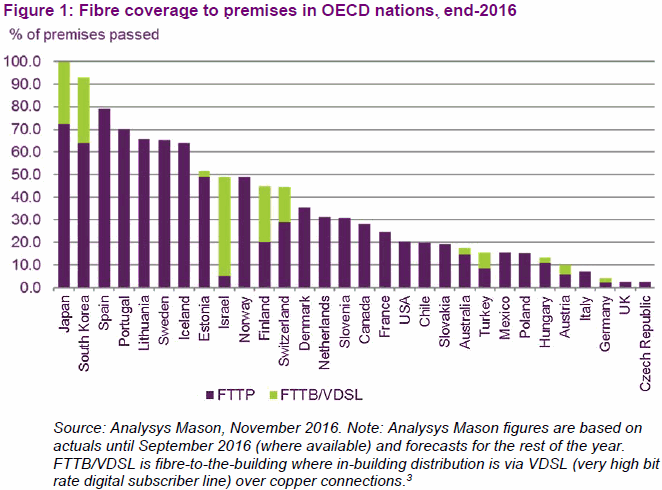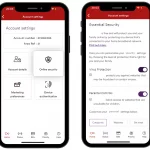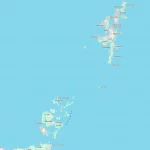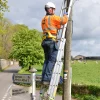UPD Ofcom Consult on BT Cable Duct and Pole Access for Full Fibre Future
The UK telecoms regulator has begun a new consultation on their proposed Duct and Pole Access (DPA) solution, which will help ISPs to build alternative fibre optic broadband networks (FTTP/H) by granting them cheaper and easier access to Openreach’s (BT) cable ducts and telegraph poles.
The solution is effectively a revision of the existing Physical Infrastructure Access (PIA) product, which was introduced some years ago but failed to become widely adopted. Some of the main problems with PIA were that it was cumbersome (administration), suffered awkward costs and was intended more for helping to connect residential homes (i.e. using it to provide leased line style rural backhaul or big business connectivity wasn’t possible, even though this helps altnets to build a more economically viable model).
As such Ofcom’s new “long term strategy” is thus to take a more proactive approach with Duct and Pole Access (DPA), such as by making it “much easier for competitors to access” (i.e. both for business and residential purposes).
Advertisement
However the regulator’s Strategic Review acknowledged that this kind of investment is currently “most viable in denser urban areas and other places with strong demand for new services,” thus they’ve also proposed new regulation to ensure that BT provides access to its range of “active products” (these allow rivals to buy capacity on BT’s network to deliver services to premises) in places where the “private sector cannot offer competing infrastructure investment” (e.g. rural locations).
Yih-Choung Teh, Ofcom Competition Policy Director, said:
“Fibre is the future for broadband, and Ofcom is helping to deliver that through competition between networks.
Today we’re explaining how access to BT’s tunnels and poles could be improved, allowing other providers to connect ultrafast, fibre broadband directly to UK homes and offices. Our plans will give providers increased confidence to invest in their own full-fibre networks at reduced cost.”
The move also has Government support, with last month’s Autumn Statement committing £400m of extra public funding towards a new Digital Infrastructure Investment Fund (here). The fund could eventually be worth upwards of £1.5bn+, when matched with private investment, and is designed to be made available to alternative fibre optic network (AltNet) providers. This was supported via 100% business rates relief for new full-fibre infrastructure for a 5 year period from 1st April 2017.
Ofcom notes that other countries have seen duct and pole access used to extend fibre optic networks to people’s doorsteps. In Spain and Portugal, the resulting competition is said to have helped deliver “full-fibre” (FTTP/H) broadband coverage of 79% and 70% respectively; this compares to around 2% currently in the UK.
In Spain the regulator notes that DPA “reduced the capital expenditure per home passed … by at least 40% compared to building it on a greenfield basis” and it’s a similar story in Portugal and France. However we’re always cautious with country comparisons because there can be big differences, such as via greater levels of public funding, lower availability of “superfast broadband” (30Mbps+), higher prices, limited wholesale access or a less dominant incumbent etc. Many of those points are true of Spain and Portugal.
Advertisement

The regulator’s Strategic Review suggested that “sufficient duct space could be available in the UK to support this model of competition” and pointed to a 2010 survey, which claimed that 63% of the 90mm duct ends surveyed and 97% of the 50mm duct ends surveyed (between the street cabinet and the premise) had at least 42% of unoccupied space.
However BT has correctly warned that this will “not all translate into useable duct space” and indeed we’ve seen plenty of issues with blocked, full or simply poor quality cable ducts crop up as part of the BT and Broadband Delivery UK deployments, which in some cases have prevented local upgrades due to the high cost of repair or challenges with access.
Several ISPs, including Vodafone, Callflow Solutions and Cityfibre among others, have already taken part in an early trial of the revised approach (here) and some of the same problems highlighted above have been encountered (here and here). Never the less Ofcom believes that their approach does still “provide a basis for cautious optimism.”
Advertisement
A BT Spokesperson told ISPreview.co.uk:
“We note Ofcom’s announcement today and we’re keen to take part in the consultation.
Openreach has the largest full fibre network in the UK, and has plans to reach up to two million premises with FTTP by the end of 2020. Full fibre is not the only way however to deliver ultrafast broadband and we plan to reach a further 10 million homes with ultrafast speeds in the same timeframe.
Our ducts and poles have been open for other companies to use for several years now and we’ve taken proactive steps to improve access since Ofcom’s last consultation. Five companies have worked with us on trials to develop improved processes that will become business as usual in January.
We will also publish a digital map of our network ahead of schedule in the new year, and we’ll continue to enhance the duct and pole sharing product if other companies are keen to invest.”
The regulator now intends to set out their full proposals for a new PIA solution during Spring 2017 and you can read their consultation here. In the meantime here’s a quick run-down of what they’re discussing today. “Looking further ahead, we want full-fibre, ultrafast broadband to be widely available in the UK,” said Ofcom.
Ofcom’s Revise PIA Approach
Fair terms for competitors
Ofcom is keen to ensure that all providers can lay fibre in BT’s ducts as easily as BT itself. So Ofcom is proposing improvements to the process so that rivals are not disadvantaged when using BT’s infrastructure to deploy ultrafast broadband services.
The proposals include changes that mean BT would recover the costs of providing third-party access, such as repairing ducts, in the same way it recovers these costs for its own deployments – for example, by spreading them across all services that make use of the duct.
Ofcom is also considering changes to Openreach’s rental charges for accessing its duct network. These rental charges are currently linked to Openreach’s costs; but an explicit cap on prices could provide greater planning certainty for providers in future.
Faster access
Ofcom is today proposing reforms that would require BT to streamline the process of conducting site surveys for its competitors, which are unnecessarily onerous, bringing them in line with Openreach’s own survey requirements.
Where a competitor relies on Openreach to carry out engineering work, it should know when this will be completed. Ofcom is considering a requirement for service-level agreements and guarantees. Alternatively, allowing competitors to undertake the engineering work themselves could provide them with greater certainty and reduce timescales and costs.
Connecting fibre to buildings
For around half of UK homes, the final connection between the customer’s home and the network is a ‘drop wire’ from a nearby telegraph pole (the other half of homes are connected by an underground cable).
Companies wishing to connect fibre directly to premises can face problems such as space and load constraints on BT’s poles, which often take time and money to resolve. In contrast, these issues do not affect BT to the same extent – for example, BT can connect a premises simply by replacing its existing copper drop wire with fibre.
So Ofcom is consulting on whether to require Openreach to upgrade its drop wires with fibre at the request of any telecoms provider who is offering full-fibre broadband to a customer. Openreach could then charge the provider for using the drop wire.
Digital map
Ofcom also wants to see Openreach provide comprehensive data on the nature and location of its ducts and poles. This new ‘digital map’ of the UK will allow competing operators to plan and deploy advanced networks.
BT is now developing an online database, showing the location and capacity of ducts and poles, and intends to make it available to telecoms providers by summer next year. Ofcom expects that the detailed network records will be provided in an appropriate format to BT’s rivals.
BT is also already trialling new, simpler processes for sharing its network, working with five other telecoms companies. While Ofcom welcomes this progress, more needs to be done to improve network competition and enable greater fibre roll-out.
UPDATE 10:44am
BT has chimed in to share a comment, which we’ve added above.
Mark is a professional technology writer, IT consultant and computer engineer from Dorset (England), he also founded ISPreview in 1999 and enjoys analysing the latest telecoms and broadband developments. Find me on X (Twitter), Mastodon, Facebook, BlueSky, Threads.net and Linkedin.
« Symmetric 10Gbps DOCSIS 3.1 Cable Broadband Trials to Begin in 2017


















































Comments are closed